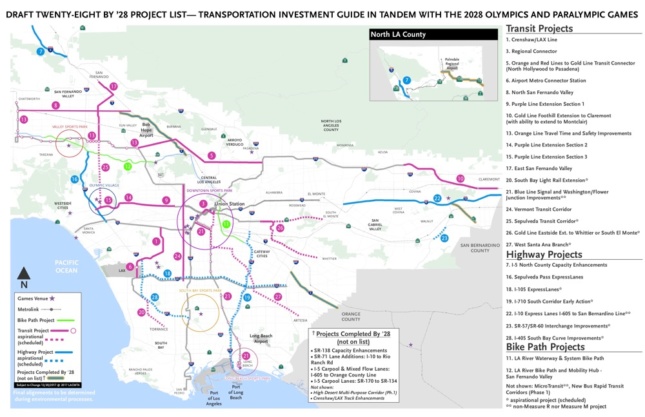A plan to bring congestion pricing to Los Angeles County has taken a tentative step forward, The Los Angeles Times reports.
In an effort to reduce traffic while also raising funds for new mass transit projects, next month the board of directors for the Los Angeles County Metropolitan Transportation Authority (Metro) will take up an initiative to study the issue. The initiative, if approved, would allow the board to assemble a panel of experts to investigate how congestion pricing might work in Los Angeles County, where The Los Angeles Times reports nearly three-fourths of commuters drive to work.
According to Metro, it could take up to two years to study possible congestion pricing plans.
Metro’s consideration of congestion pricing comes as the transit authority gears up for its “28 by 28” initiative, a plan that seeks to bring over two dozen transformative transportation projects to fruition before the city hosts the 2028 Olympics. The 28 by 28 plan would build-out L.A.’s planned public transportation system as envisioned by the recent Measure M initiative. The 2016 measure raised county sales tax rates to partially fund system expansions to the tune of $860 million per year. That’s a sizable chunk of what’s needed to bring many projects to life, but ultimately not enough to have them completed before 2028, hence the need for additional funding.

Metro is expected to tap federal and state funding sources—including California’s gas tax funds—to fill in funding gaps for projects that include a new transit route crossing the Sepulveda Pass, the completion of the Purple Line to Westwood, and a new transit line connecting Downtown Los Angeles with the southeastern suburb Artesia. Congestion pricing could help bridge the gap for the agency, however.
According to The Los Angeles Times, a recent Metro report indicates that a per-mile tax on driving could raise $102 billion over ten years and that a fee to enter Downtown Los Angeles could bring in an additional $12 billion.
Metro officials claim that congestion pricing could bring in enough new funding to lower base transit fares or even make the entire system free to ride. It’s possible that with the right congestion pricing plan, Metro could make transit more affordable and useful as it makes driving more expensive and difficult in tandem.











